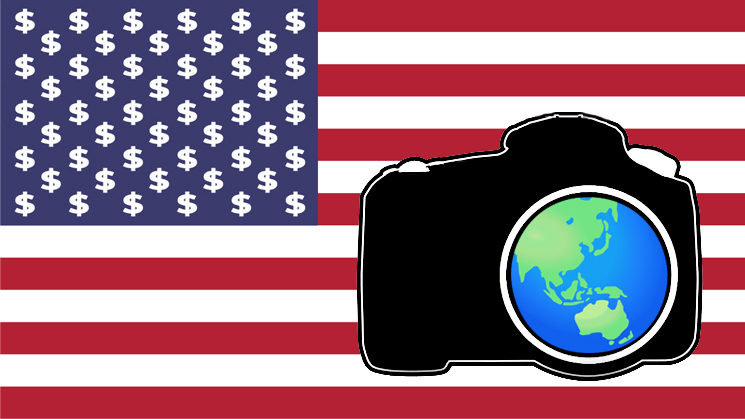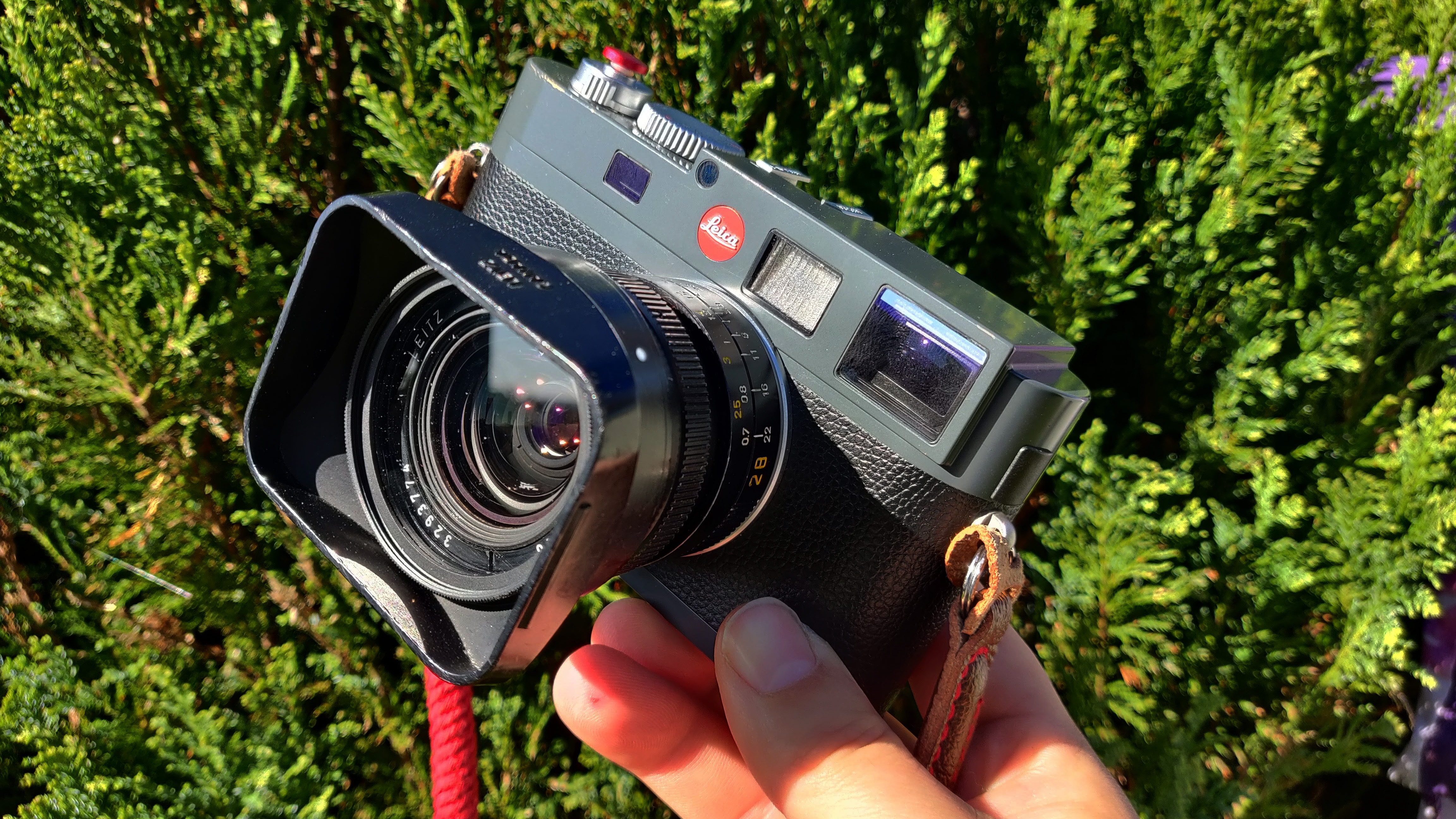Camera tariffs 101: Where are cameras made and what are the charges?
Worried about tariffs? Here's where all the big brands make their cameras, and what the relevant tariffs are

We're all worried about tariffs and the effects they'll have on prices – and when it comes to cameras, those effects could be enormous.
Obviously, the entire situation is incredibly volatile. Nobody knows for sure how things will play out or what costs will be passed on to the customer – or even if the tariffs themselves will change yet again.
While Blackmagic has confirmed that US consumers will face price rises, most of the major manufacturers are playing their cards very close to the chest. Fujifilm has suspended US shipments for certain cameras, while a Leica dealer says that there will be widespread price increases on May 01.
Still, while we don't know much in the way of specifics, we do know the countries in which the various brands make their cameras.
And although the actual rates could fluctuate – bearing in mind that the Trump administration froze all tariffs at 10% until July, for every nation except China – we know the announced tariffs for those respective countries.
So if you're thinking of buying a new body, here's a quick look at where it's made (right now, at least) and what kind of tariff is being levied on the country of manufacture:
| Row 0 - Cell 0 | Canon | Fujifilm | Hasselblad | Leica | Nikon | OM System | Panasonic | Sigma | Sony |
China (145%) | ✓ | ✓ | Row 1 - Cell 3 | Row 1 - Cell 4 | Row 1 - Cell 5 | ✓ | ✓ | Row 1 - Cell 8 | ✓ |
Germany (20%) | Row 2 - Cell 1 | Row 2 - Cell 2 | Row 2 - Cell 3 | ✓ | Row 2 - Cell 5 | Row 2 - Cell 6 | Row 2 - Cell 7 | Row 2 - Cell 8 | Row 2 - Cell 9 |
India (26%) | * | Row 3 - Cell 2 | Row 3 - Cell 3 | Row 3 - Cell 4 | Row 3 - Cell 5 | Row 3 - Cell 6 | Row 3 - Cell 7 | Row 3 - Cell 8 | Row 3 - Cell 9 |
Indonesia (32%) | Row 4 - Cell 1 | Row 4 - Cell 2 | Row 4 - Cell 3 | Row 4 - Cell 4 | Row 4 - Cell 5 | Row 4 - Cell 6 | Row 4 - Cell 7 | * | Row 4 - Cell 9 |
Japan (24%) | ✓ | ✓ | Row 5 - Cell 3 | Row 5 - Cell 4 | ✓ | Row 5 - Cell 6 | Row 5 - Cell 7 | ✓ | Row 5 - Cell 9 |
Malaysia (24%) | ✓ | Row 6 - Cell 2 | Row 6 - Cell 3 | Row 6 - Cell 4 | Row 6 - Cell 5 | Row 6 - Cell 6 | ✓ | Row 6 - Cell 8 | Row 6 - Cell 9 |
Portugal (20%) | Row 7 - Cell 1 | Row 7 - Cell 2 | Row 7 - Cell 3 | ✓ | Row 7 - Cell 5 | Row 7 - Cell 6 | Row 7 - Cell 7 | Row 7 - Cell 8 | Row 7 - Cell 9 |
Sweden (20%) | Row 8 - Cell 1 | Row 8 - Cell 2 | ✓ | Row 8 - Cell 4 | Row 8 - Cell 5 | Row 8 - Cell 6 | Row 8 - Cell 7 | Row 8 - Cell 8 | Row 8 - Cell 9 |
Taiwan (32%) | ✓ | Row 9 - Cell 2 | Row 9 - Cell 3 | Row 9 - Cell 4 | Row 9 - Cell 5 | Row 9 - Cell 6 | Row 9 - Cell 7 | Row 9 - Cell 8 | Row 9 - Cell 9 |
Thailand (36%) | ✓ | Row 10 - Cell 2 | * | Row 10 - Cell 4 | ✓ | Row 10 - Cell 6 | Row 10 - Cell 7 | Row 10 - Cell 8 | ✓ |
Vietnam (46%) | Row 11 - Cell 1 | Row 11 - Cell 2 | Row 11 - Cell 3 | Row 11 - Cell 4 | Row 11 - Cell 5 | ✓ | Row 11 - Cell 7 | Row 11 - Cell 8 | Row 11 - Cell 9 |
There are a couple of caveats there. Sigma, for example, assembles some components (such as batteries for the Sigma BF) in Indonesia, but the cameras themselves are manufactured in Japan (I went on a tour of the Sigma factory, if you're interested in that process).
Get the Digital Camera World Newsletter
The best camera deals, reviews, product advice, and unmissable photography news, direct to your inbox!
Likewise, Hasselblad makes its cameras in Sweden (and by hand, no less) but batteries are produced in Thailand.
I've also given Canon an asterisk for India, because it is currently in discussions to open manufacturing centers there. But given the enormous 145% tariff that the US is currently imposing on China – and with the bicep flexing taking place on both sides – I suspect those negotiations have taken on new urgency.
So this list is by no means exhaustive, but gives a good illustration of how complex and costly this situation is going to be.
And if you're wondering when the camera brands will wise up and just move their factories to America, don't hold your breath. As Blackmagic's Patrick Hussey explained, most camera semiconductors sold by US companies are imported from overseas.
"We were planning to build a new factory in Dallas, Texas, to streamline our supply chain and allow us to work more directly with US semiconductor companies… If we proceed with the US factory, we'd incur tariffs on those parts, increasing costs and negating the savings we anticipated."
You might also like…
Keep an eye on our live tariff updates for all the latest developments that affect the camera industry. If you want to buy a camera and are worried about prices going up, you might want to pull the trigger on one of the best mirrorless cameras sooner than later.

James has 22 years experience as a journalist, serving as editor of Digital Camera World for 6 of them. He started working in the photography industry in 2014, product testing and shooting ad campaigns for Olympus, as well as clients like Aston Martin Racing, Elinchrom and L'Oréal. An Olympus / OM System, Canon and Hasselblad shooter, he has a wealth of knowledge on cameras of all makes – and he loves instant cameras, too.
You must confirm your public display name before commenting
Please logout and then login again, you will then be prompted to enter your display name.
